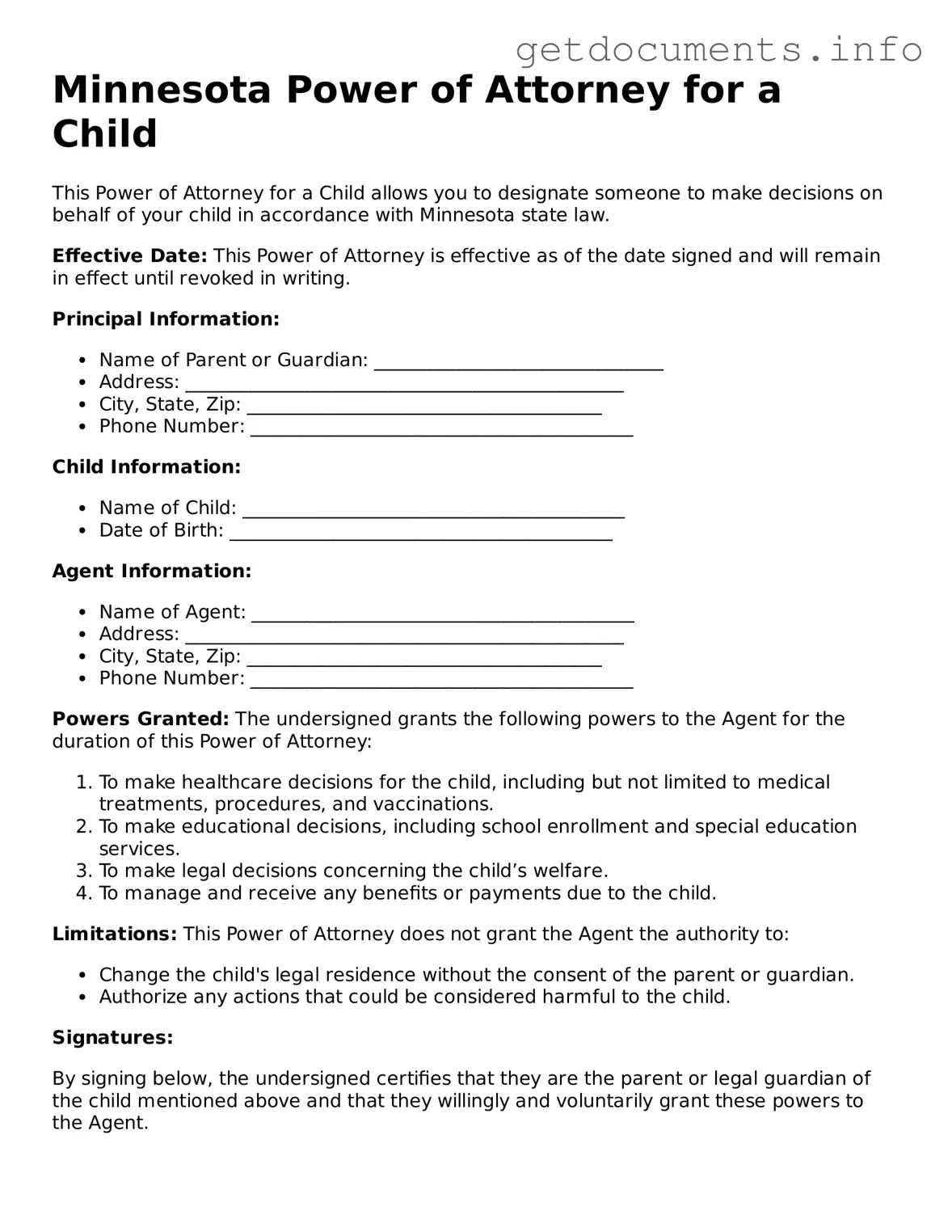Free Power of Attorney for a Child Template for Minnesota
The Minnesota Power of Attorney for a Child form allows a parent or legal guardian to designate another adult to make decisions on behalf of their child. This legal document is crucial for ensuring that a trusted individual can care for and make important decisions regarding the child's welfare when the parent is unavailable. To get started, fill out the form by clicking the button below.
Access Power of Attorney for a Child Editor
